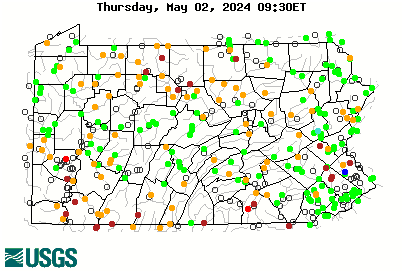I’m aware of where the nutrients come from. I have a manure management plant that I must adhere to. I’m also subject to inspection to make sure I’m adhering to the distance set back requirements, as well as proper storage of the manure and that I’m following BMPs for application times.The Susquehanna's—and the Chesapeake Bay’s--pollutants fall into three broad categories: nutrients, sediments, and toxics. Nutrients include nitrogen and phosphorus which are applied to crops as fertilizer or manure on farm fields, parks and golf courses—and backyards. Farmers in the Susquehanna basin have historically applied a great deal of fertilizer to their crops.
StormwaterPA - Susquehanna River | How Healthy is Susquehanna River?
www.stormwaterpa.org
Meanwhile, those living in suburbia can apply as much fertilizer as they like, without any oversight.




